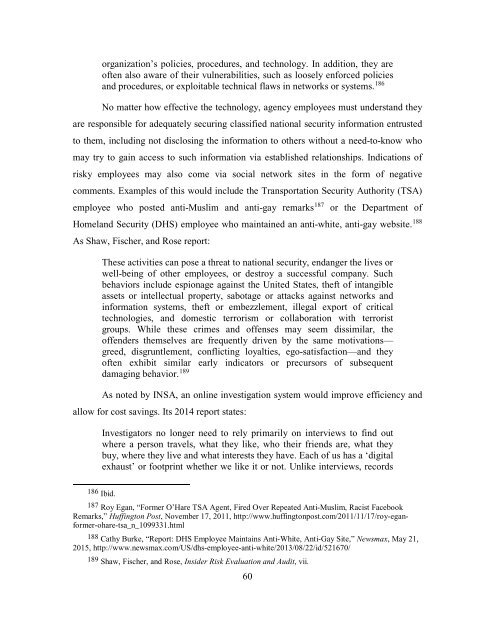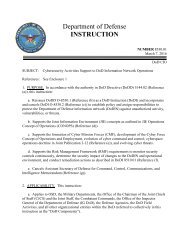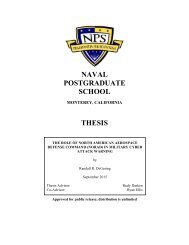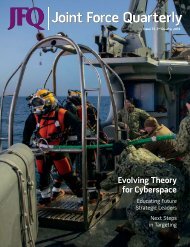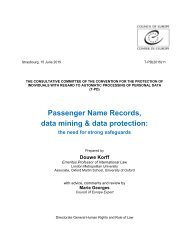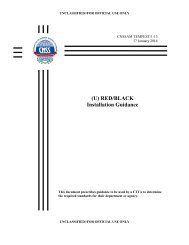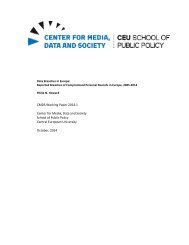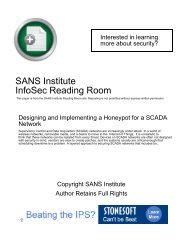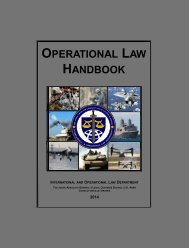SCHOOL THESIS
?view&did=768625
?view&did=768625
You also want an ePaper? Increase the reach of your titles
YUMPU automatically turns print PDFs into web optimized ePapers that Google loves.
organization’s policies, procedures, and technology. In addition, they are<br />
often also aware of their vulnerabilities, such as loosely enforced policies<br />
and procedures, or exploitable technical flaws in networks or systems. 186<br />
No matter how effective the technology, agency employees must understand they<br />
are responsible for adequately securing classified national security information entrusted<br />
to them, including not disclosing the information to others without a need-to-know who<br />
may try to gain access to such information via established relationships. Indications of<br />
risky employees may also come via social network sites in the form of negative<br />
comments. Examples of this would include the Transportation Security Authority (TSA)<br />
employee who posted anti-Muslim and anti-gay remarks 187 or the Department of<br />
Homeland Security (DHS) employee who maintained an anti-white, anti-gay website. 188<br />
As Shaw, Fischer, and Rose report:<br />
These activities can pose a threat to national security, endanger the lives or<br />
well-being of other employees, or destroy a successful company. Such<br />
behaviors include espionage against the United States, theft of intangible<br />
assets or intellectual property, sabotage or attacks against networks and<br />
information systems, theft or embezzlement, illegal export of critical<br />
technologies, and domestic terrorism or collaboration with terrorist<br />
groups. While these crimes and offenses may seem dissimilar, the<br />
offenders themselves are frequently driven by the same motivations—<br />
greed, disgruntlement, conflicting loyalties, ego-satisfaction—and they<br />
often exhibit similar early indicators or precursors of subsequent<br />
damaging behavior. 189<br />
As noted by INSA, an online investigation system would improve efficiency and<br />
allow for cost savings. Its 2014 report states:<br />
Investigators no longer need to rely primarily on interviews to find out<br />
where a person travels, what they like, who their friends are, what they<br />
buy, where they live and what interests they have. Each of us has a ‘digital<br />
exhaust’ or footprint whether we like it or not. Unlike interviews, records<br />
186 Ibid.<br />
187 Roy Egan, “Former O’Hare TSA Agent, Fired Over Repeated Anti-Muslim, Racist Facebook<br />
Remarks,” Huffington Post, November 17, 2011, http://www.huffingtonpost.com/2011/11/17/roy-eganformer-ohare-tsa_n_1099331.html<br />
188 Cathy Burke, “Report: DHS Employee Maintains Anti-White, Anti-Gay Site,” Newsmax, May 21,<br />
2015, http://www.newsmax.com/US/dhs-employee-anti-white/2013/08/22/id/521670/<br />
189 Shaw, Fischer, and Rose, Insider Risk Evaluation and Audit, vii.<br />
60


